INDIAN OCEAN TRAVEL by TOURISMER
INDIAN OCEAN TRAVEL by TOURISMER

Responsible travel Mauritius
Mauritius is a absolute resting place for all the stressed and fans of pure rays of sunshine in a dream setting. Despite its small size,
Mauritius offers a surprising array of customs and cultures , on much more affordable terms than its fame as a haven for the wealthy might lead one to believe.
In the turquoise waters of the Indian Ocean, hundreds of species of birds, endemic fauna and flora coexist.
Doing Ecotourism in Mauritius means taking into account the economic, social and environmental issues of the Island.
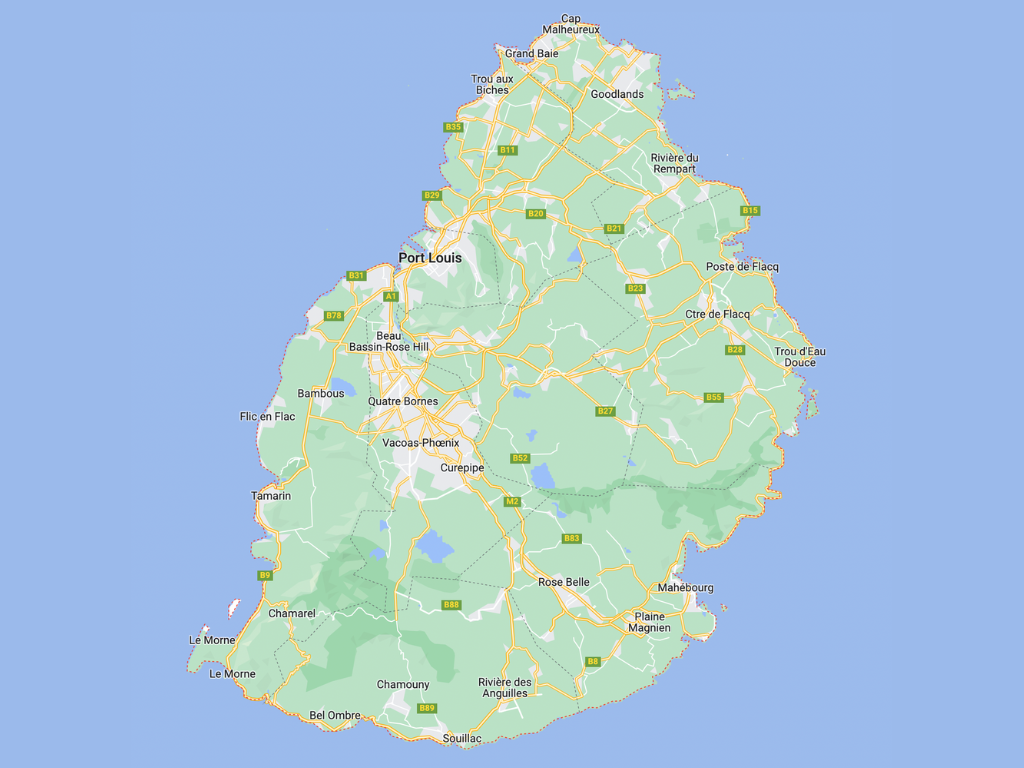
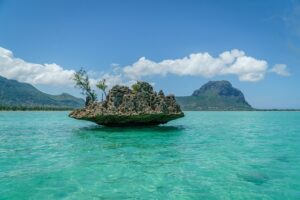
Mauritius is now positioned as a green tourism destination and has embarked on the sustainable development of its activities and leisure for several years.
We are supporting
![]()
It is likely that the Austronesians discovered the Mascarene archipelago, The Arabs probably discovered Mauritius in the Middle Ages, at an unknown date From the beginning of the XVIe century, the Portuguese set foot in the Mascarenes.
It is towards the end of the XVIe century that the Dutch sailors of the Dutch East India Company began to sail the Indian Ocean.
In 1598, a Dutch squadron, under the command of Admiral Wybrand van Warwyck, approached Mauritius, which was renamed Mauritius in honor of Maurice de Nassau. In order to make their new establishment in Mauritius profitable, the Dutch around 1641 developed the trade in slaves from Madagascar.
In 1710, the Dutch voluntarily abandoned Mauritius after looting the local fauna and flora.
In September 1715, France, whose trade with the East Indies was harassed by the piracy raging in the region, sent a warship to station in Mauritius in order to take possession of it.
TheFrench supremacy in the region
While the Ile de France had only 1,000 inhabitants in 1735, it reached 20,000 inhabitants in 1767, including 15,000 slaves. Bourbon Island (Reunion) had 8,000 (including 6,000 slaves).
Pierre Poivre develops the island
Thanks to Pierre Poivre, a former employee of the East India Company who has known the region well since 1746, the Mascarene archipelago became a prosperous and organized colony, envied by the British.
Botanist and member of several science academies. It is to him that Mauritians owe the famous garden of Pamplemousses, which is home to giant water lilies and more than 60 varieties of palm trees. In addition, Poivre sanitized the moral and social climate of the Mascarenes by improving the lot of slaves throughout the archipelago.
Pierre Poivre also introduced the printing press to the Ile de France in 1768 (the Royal Printing Office of Port-Louis).
The Revolution and the Empire
On July 27, 1793, the French National Convention proclaimed the prohibition of the slave trade and, a few months later, on February 4, 1794, that of slavery. The decree prescribed "immediate abolition The Colonial Assembly of the Isle of France (Mauritius) spoke out against this decree and insistently demanded from the Convention its pure and simple abolition.
In 1803, General Decaen sent by Napoleon landed in the Mascarenes to impose the new political regime. during the Napoleonic wars, Île de France and Île Bonaparte had become the rendezvous of French corsairs who organized successful raids against British commercial ships on the route to India. Even if some achieved exploits, like Surcouf, this did not prevent England from extending its domination.
The last French governor of the Ile de France, General Decaen, had to capitulate.
In 1832, the English colonial government imposed a first language policy: the English language became compulsory for Mauritians when communicating with the British authorities. The following year, English became the only language of the Administration, serving as a criterion for hiring in government services.
Under this administration, the cultivation of sugar cane, launched by La Bourdonnais, spread and quickly made the wealth of planters of French origin. They will fight with all their might against the plans for the abolition of slavery, which became effective in Mauritius on February 1, 1835, after the British crown paid the planters substantial compensation.
Between 1835 and 1865, to compensate for the departure of many of their former slaves, more than 200,000 immigrants or Indian and Chinese coolies or indentured flocked to Mauritius and radically changed the ethnic composition of the inhabitants.
While Mauritius had 200,000 inhabitants in 1860, there were around 500,000 in 1910.
Epidemics of cholera and malaria killed at least 50,000 people between 1866 and 1868.
Moreover, the economy based on the monoculture of sugar cane remains very vulnerable to diseases and natural disasters.
At the beginning of the XXe century, the Mauritian population reached 371,000 inhabitants and the majority of the population was already made up of Indians. In 1870, the island lost its strategic position on the occasion of the opening of the Suez Canal, and this event had the effect of removing the island of Mauritius from the route to India and worsening the socio-economic situation. economic.
The end of the XIXe century marked a difficult period for Mauritius, whose exports were declining and which was hit by epidemics and cyclones that ravaged Port-Louis.
Until 1903, Mauritius and the Seychelles were administered as a single colony by Great Britain. Then, Mauritius asserted more and more its autonomy vis-a-vis the British crown. From the 1930s, popular movements in favor of democratization began to manifest themselves and gradually led to the right to universal suffrage and to the legislative elections of 1948.
The Second World War put a new blow to the economic activity of the island. From 1939 to 1942, boat connections were interrupted and Mauritius was cut off from the world. The British, however, maintain a military presence.
Universal suffrage was introduced in Mauritius in 1958.
March 12, 1968 – Proclamation of the independence of Mauritius
General elections were held on August 7, 1967, and the Independence Party won the majority of seats. In January 1968, six weeks before the declaration of independence.
Mauritius adopts a new constitution and independence is proclaimed on March 12, 1968. Queen Elizabeth II remains Head of State as Queen of Mauritius.
The Constitution of Mauritius does not mention any official language. Nevertheless, English is used by the administration.
The Mauritian population is multilingual, with most Mauritians fluent in Mauritian Creole, French (about 73%) and also English.
There are 26% Catholics and 6.5% Protestants and Anglicans. Muslims make up 17% of the population. They are generally Sunnis and descendants of Indian migrants.
Music and dance
Two local musical genres are present on the island.
Sega and Sega Ravanne (typical Sega from the old days), Creole music and dance endemic to Mauritius. Songs and dances in the Bhojpuri language which continue to enjoy a certain interest despite the decline of this language on the island. Other musical currents are part of the musical wealth of the island, we find reggae with very popular artists such as Kaya.
Sega
Music and dance originating from African slaves, sega is the most widespread artistic form on the island. It is danced by sliding the feet on the ground without ever lifting them. The apparent simplicity of this dance originated in the fact that the sand prevented sophisticated steps.
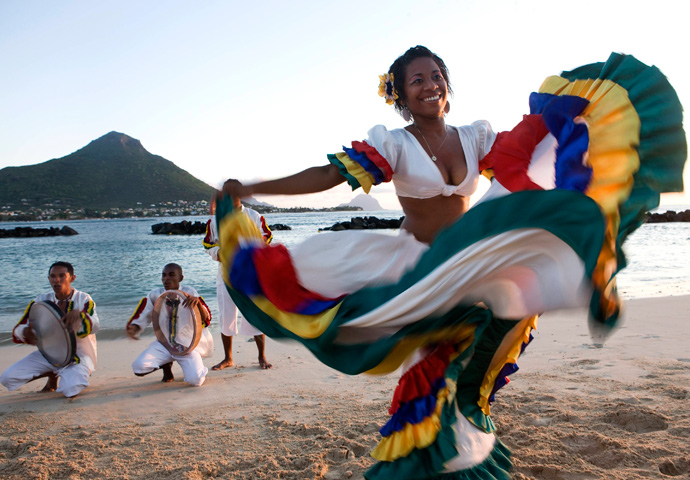
Literature
Literature conceived in Mauritius is two centuries old and brings together various authors, from Xavier Le Juge de Segrais to Léoville L'Homme. We can note some internationally known authors, such as J. M. G. Le Clézio, winner of the Nobel Prize for Literature in 2008.
It has been crossed by themes as diverse as exoticism, interbreeding, social and racial conflicts, Indianoceanism or, more recently, by constructions combining postmodernism and post-structuralism, particularly in coolitude, conceived as a humanism of the diverse born in Mauritian soil. She speaks to herself, tells herself, sings to herself.
Sculpture
The Dronte de Maurice is a species of bird, endemic to Mauritius, disappeared since the end of XVIIe century. He is better known as dodo, he is the model for many sculptures in wood, terracotta, metal.

The cuisine of Mauritius has been influenced by Creole, French, Chinese, and especially Indian traditions. Rice, chicken, fish and seafood are the basic ingredients. The dishes are cooked by adding a sauce made from tomatoes, garlic, ginger, mustard seeds and many spices.
Some emblematic dishes:
Chili cake salad
Chilli cakes are a Mauritian specialty made with split peas, coriander and chilli.

Source: https://www.papillesetpupilles.fr/2014/05/gateaux-piment-ile-maurice.html/
The fish rougaille
It is a typical Creole dish, accompanied by white rice and lentils, a sauce made from tomato, garlic, ginger, onions, chilli and spices is prepared and then salted fish is added

Crab broth
It is prepared with pepper, mustard and cumin seeds, chilli, spices, water and tamarind sauce. It is served very hot, most often in winter.
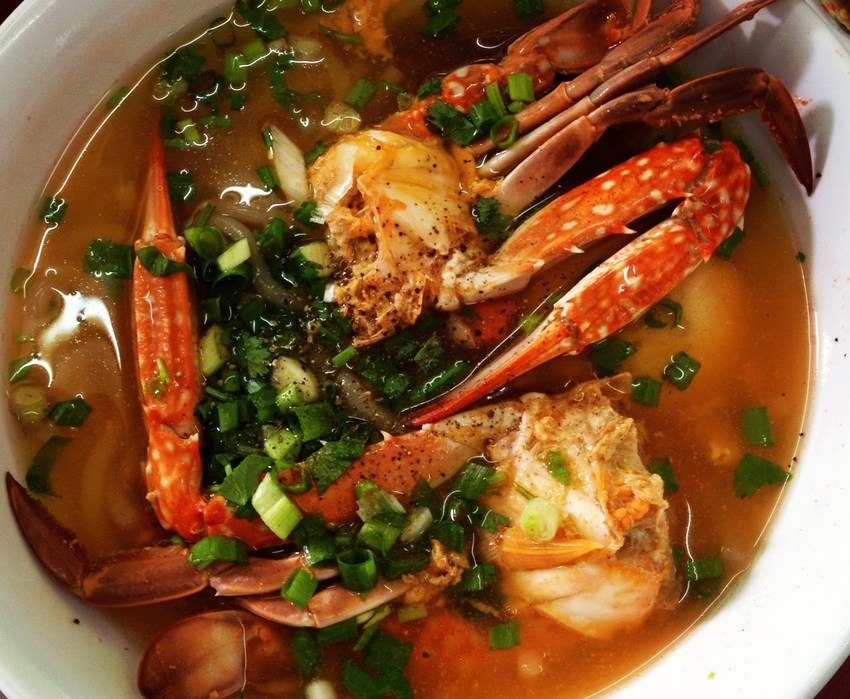
Dholl puri
It is a star of Mauritian street food. It is made with flour and split peas. It goes well with big pea curry, rougaille, coconut satini…
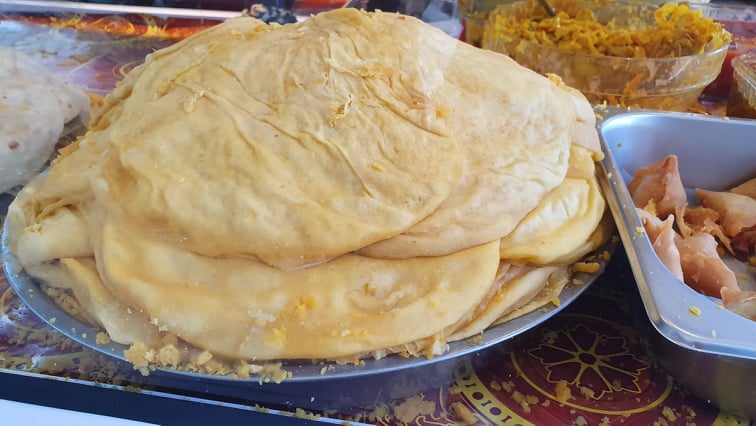
Mauritius is a paradise with its dream beaches and turquoise lagoon!

The town of Tamarin is famous for its giant waves which are a delight for surfers. You will have the pleasure of seeing many dolphins in its bay

This uninhabited islet is an unmissable site, it is one of the most wonderful on the island.
Ile aux Cerfs invites you to relax on its superb white sand beaches, in the shade of the palm trees, dive into its turquoise waters, and also participate in the nautical activities planned for all, throughout the year: kayaking , canoeing, sailing, …

This essential hike in Mauritius allows you to approach the seven waterfalls of the Tamarin River as closely as possible. You can choose your formula alone, or with a guide to avoid asking questions. You can also prepare for the hike by asking Mauritians who know their island. If the trail is very easy to follow in general, some passages are not obvious. To avoid getting lost, the trace of the red fabrics are sometimes attached to the branches to help find one's way.
 Le Morne Brabant is one of the most preserved and wildest mountains on the island. It is the habitat of a very wide variety of endemic species, the Trochetia Boutoniana, which is the floral emblem of Mauritius. Some steep parts of the climb require hand support to progress, but the effort is worth it! It reveals a large part of the island, and superb views of the lagoons.
Le Morne Brabant is one of the most preserved and wildest mountains on the island. It is the habitat of a very wide variety of endemic species, the Trochetia Boutoniana, which is the floral emblem of Mauritius. Some steep parts of the climb require hand support to progress, but the effort is worth it! It reveals a large part of the island, and superb views of the lagoons.
 The Garden of "Pamplemousse", located in Pamplemousse of 37 hectares, is a tropical botanical garden which contains very many species originating from different regions of the world, with varieties of essences full of charm with superb colors.
The Garden of "Pamplemousse", located in Pamplemousse of 37 hectares, is a tropical botanical garden which contains very many species originating from different regions of the world, with varieties of essences full of charm with superb colors.
It has been enriched, over the years since its creation, with many species from sometimes distant tropical countries. It is a real paradise for the senses: nutmeg, clove, camphor, laurel, trees and spices from the West Indies, India, Africa, China... not to mention the many flowers, araucarias, orchids, and of course the numerous palm trees: more than 95 varieties!

A few steps from the Mauritian seaside coast, this 25 ha limestone islet, which has become a nature reserve, offers us an immersion in the original nature of Mauritius. Between rows of lataniers (species of palm trees) and ebony forest, many endemic plants thrive. You can glimpse a few giant tortoises and admire extremely rare species of birds: because in 2006, 260 individuals were released on Île aux Aigrettes, which had regained a good balance. We can also see superbly colored geckos: the geckos are reptiles. They are part of the group of animals commonly known as "lizards".



More than 60 kilometers of trails have been traced in the park. The most important are those leading to the summit of Mauritius, the Piton de la Petite Rivière Noire.
The park is home to several mammals typical of the Mascarenes or Madagascar such as the tangue or the black fruit bat. Nevertheless, it is above all from the point of view of the avian fauna that it is most interesting with the Paille-en-queue, the Mauritius kestrel, the Mauritius parakeet, the pink pigeon, the Mauritius cuckoo-bird, the Mauritius bulbul, Mauritius gray white-eye, white bird and Mauritius fody.
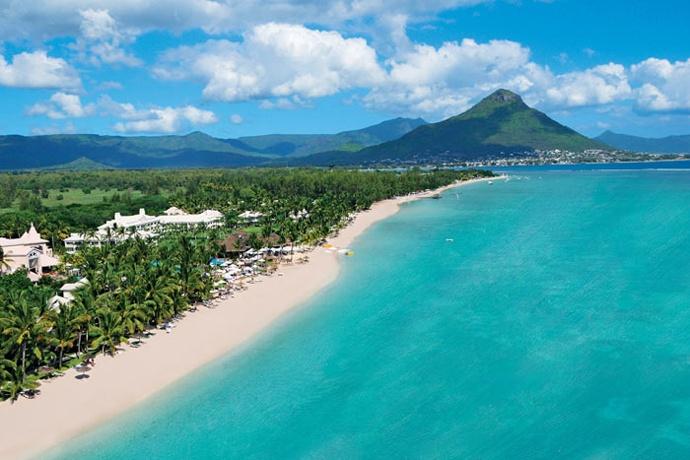
This splendid village is located on the west coast of Mauritius, sheltered from the wind almost all year round. It is mainly here that you will have the chance to see many cetaceans almost every morning. You can enjoy this great public beach which is relatively deserted during the week.
 A one-of-a-kind landscape that has become a symbol of Mauritius: in the Black River District, the Seven Colored Earths of Chamarel undulate and take on a palette of orange tones. These multicolored sand dunes seem to have all the colors of the rainbow.
A one-of-a-kind landscape that has become a symbol of Mauritius: in the Black River District, the Seven Colored Earths of Chamarel undulate and take on a palette of orange tones. These multicolored sand dunes seem to have all the colors of the rainbow.

It is a natural park with many endemic plants, wild animals, and rare landscapes. The most emblematic curiosity of the park is the earth of 23 colors. It is a rock surface that is several millennia old, resulting from a chemical reaction.
More than 60 kilometers of trails have been traced in the park. The most important are those leading to the summit of Mauritius, the Piton de la Petite Rivière Noire.
The park is home to several mammals typical of the Mascarenes or Madagascar such as the tangue or the black fruit bat. Nevertheless, it is above all from the point of view of the avian fauna that it is most interesting with the Paille-en-queue, the Mauritius kestrel, the Mauritius parakeet, the pink pigeon, the Mauritius cuckoo-bird, the Mauritius bulbul, Mauritius gray white-eye, white bird and Mauritius fody.
A large body of water called Mare Sarcelle covers nearly 89 hectares (220 acres) of the park. In addition to a multitude of ponds sheltering native ferns and orchids, the Mare Sarcelle is home to mangroves and many birds. The body of water is becoming very popular with hikers and bird watchers. The park is also the site of the Mauritius Radio Telescope. Bras d'Eau conceals ruins within its forest, including the remains of a sugar cane mill and a lime kiln. Two species of giant trees native to Mauritius still survive in the national park: Diospyros melanida and Diospyros egrettarum, which yield ebony. The park also serves as a nature reserve for several endemic and rare bird species.
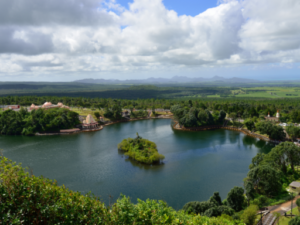
Find more updated information on Tourism in L’Ile Maurice in our Blog Tourismer.io

Ti Rayons Soleil, ONG créée en 2007 à l’île Maurice, vient en aide aux enfants et aux personnes vulnérables, vivant dans des poches de pauvreté. Les projets de développement communautaire ont pour but final la lutte contre la pauvreté et l’exclusion par la formation, l’ « Empowerment », le soutien éducatif, nutritionnel, médical et para médical. L’encadrement des personnes dans les programmes permet de créer du lien social et ainsi, de contrecarrer l’exclusion.